SPRING 2023
How Austin Filmmakers, Musicians, and Artists use the city to help their art come to life!
Graphics by Laila Ross
How Austin Filmmakers, Musicians, and Artists use the city to help their art come to life!
Graphics by Laila RossMaking this magazine has been a fun and experimental journey to say the least, and we’ve all learned so much in the time that we’ve spent curating Arts in Austin. Our goal was to create an easy to read and fun bundle of information for all to enjoy.
Our topics, including Traditional Art, Digital Art, Music, and Film, have all been thoroughly researched and displayed by our wonderful editors. All of these topics work together to display what we want to showcase about Austin and its beyond wonderful creative community.

During the construction of our Ezine, we had to learn our way around new softwares, reach out to many people, and do days of research to get the most accurate and valuable information. We were able to dive into our own topics of interest, and learn more about what goes on behind the scenes. We are proud of how we put together a colorful and energetic style into every one of our pages. Our specially picked colors, themes, fonts, and styles work together best to create lovely graphics and stories by all of our editors and designers.
In this magazine, curating the layout and infographics took a lot of time, skill, and dedication to make them perfectly easy to read and understand, while keeping a beautiful aesthetic. We hope you enjoy and most importantly learn about these talented and hard working artists that live among us.
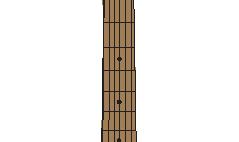
As a band and guitar enthousianst, Dmitry Muhkin is our editor for local music artists in Austin. He has been playing guitar for six years, and owns multiple of this instrument. For this magazine, he writes mainly about music, one of his many passions. After he graduates he plans to go to an engineering college. A fun fact about him is that he loves guitars so much, he has twelve of them!
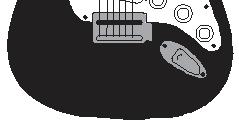

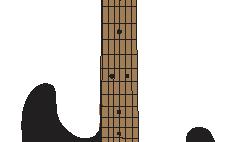
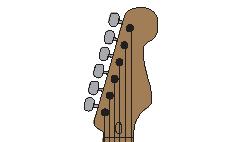


Benjamin Wilson is a editor for Arts in Austin. He is writing a story about digital art and artists in Austin. He plans to go to a college in the future and possibly become a marine biologist. Playing music is one of the thing he enjoys in his free time. Reading is another hobby of his that he especially enjoys, as Ben finds it relaxing and a good way to spend the time. A fun fact about him is that he enjoys eating oranges with the peel!


Laila Ross is an editor for Arts In Austin. She is specializing her writing in the art of filmmaking, focused on local Austin filmmakers. Laila is very passionate about photography, classical guitar, and visual art. When she graduates from Liberal Arts and Science Academy, she wants to go to law school after college and become a lawyer in the footsteps of her parents. Laila can be described as creative and charismatic, and a fun fact is that she loves pickles and pigs!
Mikayla Yu, an editor for Arts in Austin, is writing about traditional and visual arts and artists in Austin. She is focusing on how Austin brings inspiration and unique style to the arts we see locally. Mikayla enjoys drawing as it helps her express her thoughts and emotions through creativity. When she graduates college, she wants to attend college and then travel the world. Mikayla can be described as kind and organized, and a fun fact is that she is lefthanded!

 Ben Wilson
Ben Wilson
 Beth Consetta Rubel’s murals are filled with bright colors and deep messages. Murals are an important part of Austin culture and add personality to local roads and buikldings. Photo courtesy of Beth Consetta Rubel
Beth Consetta Rubel’s murals are filled with bright colors and deep messages. Murals are an important part of Austin culture and add personality to local roads and buikldings. Photo courtesy of Beth Consetta Rubel
AArtists use their job as an outlet for their emotions and stories but also as a platform to inspire and move people. “Being an artist is a place of living my most authentic life and being who I am to the core,” said Austin-based artist Vy Ngo.

Austin is a city that people describe as vibrant, and its culture has been able to shine through the many artists living in it. Murals can be seen on many buildings along the streets of downtown and give the city its personality and funky charm. The Blanton Museum of Art is full of art from around the world and from local artists. Many people feel that the museum has been a point of connection in the Austin community with its diverse range of art and artists. Other artists like Vy Ngo and Beth Consetta Rubel display their work in galleries around the city that are able to reflect their stories in a setting with more creative freedom. Both museums and galleries strive to display pieces that will resonate with their viewers and leave a lasting impression.
Artist Beth Consetta Rubel works with others more closely by drawing portraits of people in her Paper Bag Test series which consists of can-
did drawings on paper bags of influential African-American figures that she started over ten years ago. It was based on a discriminatory practice where Black people’s skin tone was compared to a paper bag which gave them certain privileges depending on if they were lighter or darker. “The biggest influence on my art is connecting with people and hear ing their person al narrative so that I can get an idea of who they are,” Rubel said. “Whenever you look at my work, there are the celebrity portraits and the portraits I do of real people, and there is a big difference when I look at them. In the ones where I am inter viewing the person, it has more of an im pact because I am think ing of their story while I do their artwork,” said Rubel. When she was growing up, Rubel had many experiences with racism, especially as she is a biracial woman in Texas. “I had a lot of professors tell me I was not black enough to
do the work I was doing… It was the catalyst that made me research ‘What makes someone Black enough?’” said Rubel.
This inspired her Paper Bag Test series which explored deeper themes of colorism
“ Vitality, Reborn” (2020) is a blend of manycolors ingraphic and abrtact patterns. The artist,VyNgo, created this piece in support of cancer survivros.Photo courtesy of
VyNgo,Artist
and personal experience with biases based on the shade of their skin.
“My style, I would say, is really expressive but also realistic, like a controlled chaos, which reflects me as an artist,” Rubel said.
Her work typically consists of mixed media which is created with a blend of mediums.
“Ever since I was a child, I have always used whatever materials I had at the time,” said Rubel. “I do that now, but I make sure the materials relate to the meaning of the piece like in the Paper Bag. I just love the juxtaposition of soft chalk pastels and then the opaque gouache paint, and I am always exploring new tools.”
Fellow artist, Ngo, also said that her art reflects who she is.
“My artwork is my story… Everything is very personal, and that’s the only place I can create from, otherwise it wouldn’t ring true,” Ngo said. Ngo grew up with a large influence from her parents
who immigrated to the US from Vietnam, and it has influenced her artistic and personal journey.

“Being a first generation child of immigrants and refugees, I felt some responsibility in pursuing the greatest amount of opportunity as I possibly could given the circumstances of where my family came from.

And so I pursued medicine, but it wasn’t my first passion,” said Ngo.
Ngo built a career in medicine for 10 years as a physician, and had to put art on hold for a while. But now, she is rediscovering her passion for the arts as she did when she was young. She even draws influence from her dance as a child.
“I’m very vibrant in my colors and lots of movements because I used to be a dancer. So when I paint, I have to move my whole body. the style themselves or the images that are being portrayed really fits more to the narrative or what it is that the body of work is, is saying. Another common thread in a lot of my work is bright colors.”
These themes can be seen in her many types of work including: abstract, cultural, representational, and installations. All of these forms are unique and are all very important to her.
“My abstract paintings are very personal because they’re more of a language of my
Visitors at the Blanton Museum of Art in Austin admire the artwork of Latin American artists, one of the many collections featuring international pieces. The Blanton has been a vital part of the Austin art scene and in preserving the culture of many countries in different time periods. Photo courtesy of the Blanton Museum of Artinternal emotional space. but I think the representational work is very personal in regards to it. It addresses cultural identity as an Asian American and as a first generation. It’s more interpretable and tangible,” Ngo says.

Although these are common trends in her work, defining her style is not something she finds important.
“I don’t like to be pigeonholed into one style. I don’t like to think that I’m limited, and
approaches art in whatever perception or stage of life they’re in. How they interact with it is really their own journey.”
Rubel not only stressed the importance of her artwork to her but also the emotional impact and connection her viewers can get from it. “Art has allowed me now to be able to share other people’s story and narratives that dont have the opportunity to do so just like I didn’t, back when I didn’t feel like I
only known for one thing. I’d like to be known for my work in regards to how it makes people feel and what it’s said.”
As media manager for the Blanton Museum, Katie Bruton agreed, “I don’t think it is important to have a specific signature because artists’ styles are always changing. I think the idea of art is to express yourself and something about your time. If you can do that, it’s always going to be something distinctive. ”
The way people perceive art will be different based on their experiences, which is what makes art so personal and human.
“I think, as an artist, you have to let go of those expectations of wanting people to ‘get it’ or feel the same thing you did because that’s not necessarily the case,” Ngo said. “Everyone
had a voice. A big part of my process with artwork involves interviewing people and asking where they come from, how they identify, or maybe experiences with colorism and anything similar,” said Rubel.
The connection between the artist and the community is very important to the life of an art piece, making the process even more personal.
According to Ngo, the Austin art scene is unique for how close the community is.
“We’re a very tight-knit community here in Austin, and everyone pretty much knows everybody,” Ngo said.
“When we see each other succeed, we really champion for each other, so it’s a great community. I love Austin and I’m very proud to be a part of it and be a part of the community.”
striking murals witha diverse range of subjects.Doing sohas exposed Austin to many cultures.

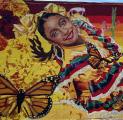
“I’d like to be known for my work in regards to how it makes people feel and what it’s said.”
VY NGO, ARTISTRubelbegan her seires “ThePaper BagTest” with BarrackObama. This series highlights important Blackfigures. Photo courtesyof Beth Consetta Rubel Rubelpaints Photo courtesy ofBeth Consetta Rubel “ HandMe Downs” featuresNgo ’ s childhood self and home.Her respresntational work explores hercultural background and story. Photo courtesy of VyNgo





Jason Eatherly is best known for his mural projects such as “Queen Elizabeth Wearing a Print Mask” that is widely known in Austin. He also does contemporary fine artwork and is mostly inspired by rundown buildings and his interest in experimentation. He says, “The freedom is what keeps me going.”
Raymond Allen works with many different mediums, especially wood because he uses it both as a canvas but also integrates it into his art. His subjects mostly are of landscapes and abstract pieces that are inspired by everyday life, nature, and traveling.
Vy Ngo is an Austin-based artist that focuses on both abstract and representational artwork. She draws inspiration from her Vietnamese-American background and life. After a long career in medicine, Ngo began painting again and has grown as an artist since.
Beth Consetta Rubel creates many different types of visual art, most notably her mural works and her “Paper Bag Test” series that highlights important Black figures. She explores ideas of race, gender, sexuality, and culture in most of her artwork which can be seen in her latest show.
Becca Borrelli is and art teacher at The Contemporary Art School in Austin that makes bright and colorful landscapes of Austin locations. She is inspired by the connections between everything in a whimsical and playful way. Her bold and graphic coloring is very synonymous with the Austin atmosphere.
Photo by Jason Eatherly Photo by Raymond Allen Photo by Vy Ngo Photo by Beth Consetta Rubel



The results of this survey show high school students’ favorite traditional art mediums. Out of 60 people, 48.3% of people chose drawing using pencils, pen, or colored pencils as their prefered medium. 20% said suclpting or pottery, and another 20% said painting using any type of paint. the rest said other forms of art like digital, origami, or printmaking, while others are not artisits and have no prefrence. These are only the most common forms of traditional art, but there are countless more creative ways and materials that artists express themselves with including a
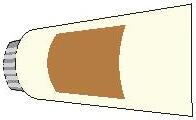
50%
Dr a w i n g 20% 10%
20%
 By Ben Wilson
By Ben Wilson
Arts are prevalent throughout Austin in things like murals, music, and film. Digital art is part of this, and is an essential part of artistic culture.
Austin prides itself as a vibrant and creative city. It is associated with music, murals, and many other forms of art. However, one aspect of art that goes unnoticed is digital art, which can refer to arts or design done on a computer. Many commercial settings, such as advertisements for companies, shows, and games make use of digital art, which has also facilitated the creation and sharing of art worldwide.
One thing is often forgotten about digital art are the real people who make it and the complex processes involved.
Hezekiah Adedoyin, an Austin-based designer, said that before talking about digital art, it is important to differentiate between digital art and design.
“I think a lot of times people
will confuse design with art. They are two different things,” Adodyin said. “So, design has a specific function, so being able to actually solve problems with it and art is definitely meant to express emotions or express ideas. ”
are websites where people will post collections of their digital art, and others will occasionally take on freelance work for individuals.
“Mostly logo designs, poster designs,” Nelson said. “There were some bands that I would do poster work for periodically album, cover designs, or some book cover designs every once in a while to get editorial work. “
Freelance artists don’t work for companies very often either, explained Kevin Philips, another freelance artist.

“It’s been almost all direct people,” Philips said. “I have had advertising jobs in the past that involved advertisement agencies and I’d be doing comic book-type stuff for them.”

Advertisements use the design aspect, and other forms of digital art are more often used in things like animation and short films. Although digital art is used in the commercial setting, there is still plenty of digital art that people do as a hobby, or fan arts of other already existing things.
Bill Nelson, a freelance artist who teaches digital art and design for high school, said there
“I can’t recommend clip studio too much for any one who is interested in [drawing] comics”
Kevin Phillips, Freelance Digital Artist
With comic book movies remaining popular in theaters, he said it helps to make a style that clients like. Philips does much of his art in comic book style. “I’m in Houston and I have done the poster for the Houston rodeo, I did the poster in a comic book

varies greatly among artists.
Phillips said, “I can’t recommend Clip Studio too much for anyone who is interested in [drawing] comics”
Nelson uses different software and applications to draw. He prefers Adobe
organic or painterly or anything like that,” Nelson said. “For things that are more logo driven, things that are more crisp and clean and, and made for I’d say websites or whatnot, I would definitely go with Illustrator.”
There is a variation of hardware that is used, such as tablets or pads. Tablets usually refer to drawing tools that have a display, and pads refer to ones without.
“I do everything digitally now, I have a display tablet so I can draw directly on screen, and that’s what I have been doing” said Phillips
style,” Phillips said. Other than places where it’s used, the creation of digital art is also an involved process, which
Suite applications when making art for clients.
“I use almost entirely Photoshop for anything that’s going to be more
Although many people create and make digital art, most of them started more traditionally with physical mediums. Because of this, drawing directly on a screen is more comfortable for most peoplez and is why most professionals uses Cintiq, a line of drawing tablets that includes a screen. However, some having gotten used to drawing without the screen and still prefer drawing pads without a display. “I’ve gotten so used to drawing with the tablet that when using a Cintiq I [want] to see my hand in front of me, and when I just use the tablet all I see is the cursor and I actually like that more.” said Nelson. Drawing tablets without a display are also much cheaper than drawing with
a display such as a Cintiq. Cintiq tablets range from around $700 to above even $2000, whereas an average no-display drawing tablet costs about $200. All of these different tools allow for many different styles to emerge. In Austin, there are some museums featuring some digital art, such as Wonderspaces, an interactive art exhibit featuring many various art styles. These museums feature artists that create in many different styles, both visual and auditory. “Learn as much as you can, practice as much as you can,” Nelson said. “And don’t get pinned down to just one style.”
There are many new and growing artists as well. Some might become proficient at one style, but Nelson advises against this. “I see a lot of students that might be extremely proficient at drawing or creating anime stuff,” Nelson said. “But you know, can you do other things? Don’t limit yourself to just one style, try to be able to do things that are photorealistic, try to do things that are more on the cartoon sensibility, you know, all of the above than trying to have as you possibly can. So if somebody were to say, ‘I really need somebody to make this or I want to make a certain thing’ that you could feel confident that

you’d be able to do it.” The process of creating digital art is important, and is the results enjoyed by many. Many pursue it as a career, while even more do it as a hobby, but artists like Nelson still enjoy the process of making it.
“You kind of get in that zone and you focus and that kind of relieves a lot of stress,” Nelson said, “and then I would say the feeling of accomplishment once you’ve created something is probably one of the best feelings ever.”

Both traditional and digital art have their differences and it is a large reason why some will choose one over the other.
With traditional art, materials are finite and need to be replaced. With digital art supplies will only need to be purchased once.

Digital art, as it is easier to share and reproduce, meaning that making money creating digital art is not just limited to selling the artwork. It can be used for advertising, entertainment, games, retail, and any other kind of industry that uses digital art.
- Variety in mediums -
With traditional art you can use paints, pencils, clay, and more.

- Leaves something tangible behind -
Traditional artwork is tangible, and sometimes seen by more people. A scuplture would be an example of this.
- Is easier to start -
Pencils and paper are easier to obtain than the tools needed to begin digital art. Additionally, you do not need any devices, power sources, or internet access to create art.
Source: Stanford Encyclopedia of Philosophy
 Eric Calistri plays a rythm guitar melody on stage. Photo courtesy of Eric Calistri
Eric Calistri plays a rythm guitar melody on stage. Photo courtesy of Eric Calistri

The creation of a song is a deeply personal endeavor, often springing from a single idea, a fleeting emotion, or an enduring memory. Pianist, composer, and arranger, Austin Kimble, known for his worlds of musical theater, jazz, classical, and pop music, shares his perspective on the genesis of a song.

“Composing, improvising, songwriting, the process of creating music in any way it can possibly appear in, is like swimming in the big ocean of ideas, and letting water guide you”, Austin said. “Sometimes, inspiration strikes when you least expect it, and you have to be ready to channel it into something tangible”. Once an idea takes root, it’s up to the songwriter to nurture and develop it, shaping it into a cohesive, engaging piece of music.
With the song’s foundation in place, the next step is to immortalize it in a recording. This process typically unfolds in a professional studio environment, where artists work alongside skilled audio engineers to capture the perfect sound.
“Recording a song is a delicate balancing act”, remarked audio engineer and guitarist Eric Calistri. “You have to respect the artist’s vision while harnessing the power of technology to bring that vision to life”. The recording process is a multi-faceted endeavor, encompassing everything from laying down individual instrument tracks to recording vocals and finessing the mix. This intricate dance between art and technology demands exceptional attention to detail and a keen understanding of the interplay between various sonic elements.
 Marc Ruiz is shown before a performance. He enjoys wamring up on the drums, Photo courtesy of Marc Ruiz
Austin Kimble plays electric piano at an Austin Club performance. Kimble loves the thrill of performing. Photo courtesy of Austin Kimble
Marc Ruiz is shown before a performance. He enjoys wamring up on the drums, Photo courtesy of Marc Ruiz
Austin Kimble plays electric piano at an Austin Club performance. Kimble loves the thrill of performing. Photo courtesy of Austin Kimble
With the recording complete, the focus shifts to preparing the song for live performance. This stage involves extensive rehearsals, as musicians refine their individual parts and synchronize their efforts to create a harmonious whole. “Rehearsals and then live performances are where the magic happens’’, said Marc Ruiz, an experienced drummer who has been drumming with many bands for more than 30 years, since the age of 5. The process of rehearsal is the time when musicians must navigate the complexities of the arrangement, adapt to the unique dynamics of live performance,and forge an unbreakable bond with their fellow band members. The song has gone through all of its stages of life before the final, the most important one. The curtains part, revealing a sea of expectant faces. A hush descends upon the room, and the atmosphere crackles with anticipation. Then, as if on cue, the first note pierces the silence, enveloping the audience in a vibrant embrace. In that moment, the transcendent power of live music comes to life. “Just let the music drive you,” said Ruiz.

 Eric Calistri plays rhytm guitar with his band. Playing with a band can help with nerves. Photo Courtesy, of Eric Calistri
Eric Calistri plays rhytm guitar with his band. Playing with a band can help with nerves. Photo Courtesy, of Eric Calistri
“You have to respect the artist's vision while harnessing the power of technology to bring that vision to life”
ERIC CALISTRI, MUSICIANAustin Kimble is shown happily playing a keyboard during a performance. The setting really helps Kimble get into character whe playing. Photo courtesy of Austin Kimble.



Kurt Cobain’s “Fender 1969 Mustang, Compeition Burgundy”
This guitar is undoubtely best known for its appearance in the music video for the song “Smells Like Teen Spirit”, filmed on August 17, 1991.
Jimmy Page’s “Gibson EDS-1275 double-neck”
Jimmy Page used both, sixstring and a twelve-string guitar while recording “Stairway to Heaven”, so he needed to switch from one to anohter mid-song while playing live, which was too uncomfortable to do, so he stumbled across the doulbe-neck solution.
Eric Clapton’s “Blackie” was his main recording and performance guitar in the 1970s and 1980, and has become his most famous instrument. Clapton’s guitar tech, Ted Newman-Jones assembled it from three late 1950s stratocasters: it has a 1956 body, a 1957 neck, and 1950s pickups.
In a survey about the most listened genres of music among 70 Austin high schoolers, other responses include: metal, jazz, classic, EDM, country, and Latin.
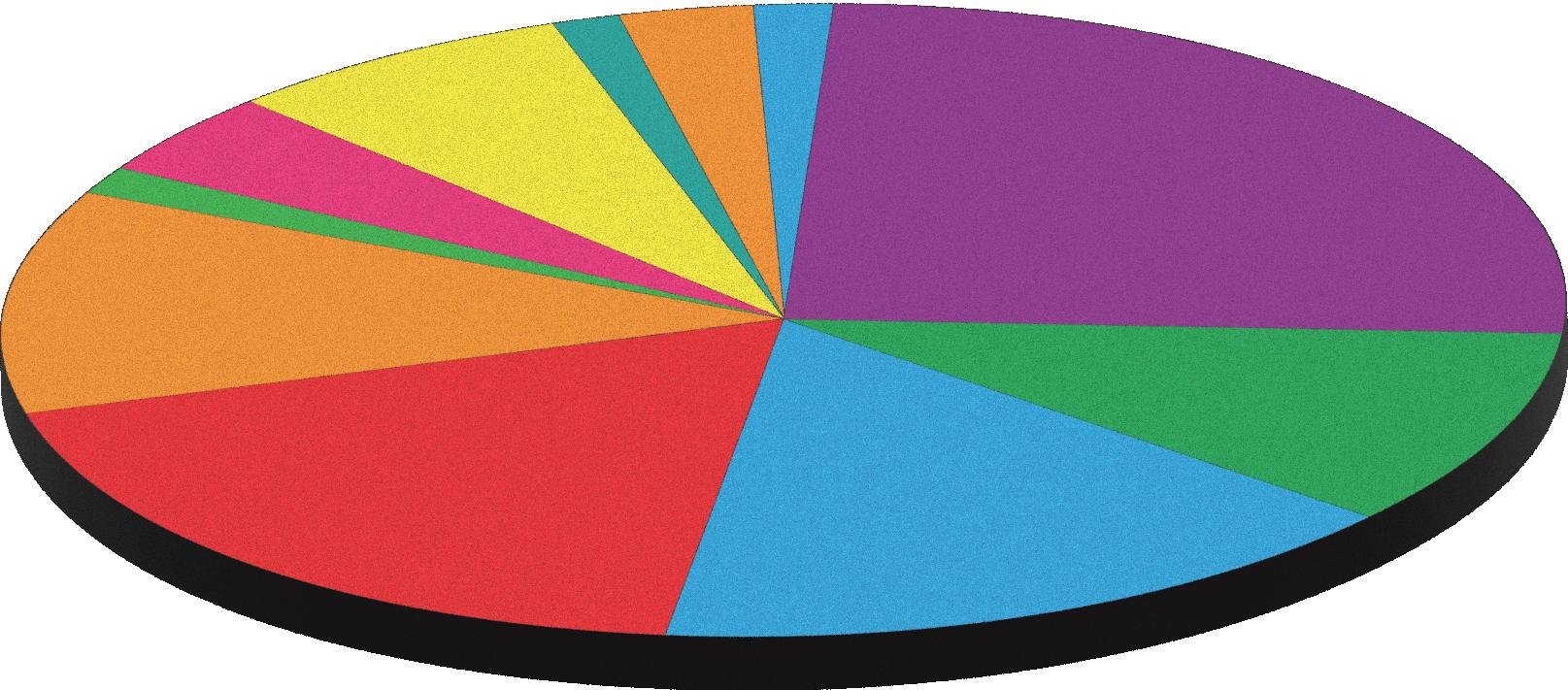



Chuck Berry’s “ES-335” in the cherry red color was his most iconic guitar. Despite playing numerous versions of the instrument, some with Maestro vibratos, some with Bigsbys, and some with no vibrato at all, the guitar can be told apart by the split diamond on its headstock.

 By Laila Ross, Editor
By Laila Ross, Editor
Smiling for the camera comes natrually to our city. Austin, which might not be well known for its film culture, but there is quite a lot that goes on year round, where film festivals, commercial projects, and local casting calls are frequently occurring. Different specialists of all ages devote their career to creating films in hope of touching others and spreading
messages and morals across the world and through the screen.
Based in South Austin, Filmmaker William F. Reed composes and directs many projects. As a teacher at the Austin School of Film, he has a lot of experience behind the camera and educating students of all ages to make a film from start to finish. When working in Austin, he enjoys the community aspect of the city. It’s easy to make
friends and find beneficial connections with other filmmakers and artists in the industry. “The inclusive nature of Austin is probably what’s most appealing to me. The phrase, ‘Let’s keep Austin weird’ resonates with me because I’m a weird person,” Reed said. Austin has been growing rapidly over the last few years, and this means new faces and new talent for filmmakers to run into and work with.
Austin Filimmaker, William F. Reed, is shown passionately talking with other creators and producers about his goals during filming on set.Although this can be overwhelming, it can be beneficial and spread professional connections through friendship. “Austin’s a big metropolis, but the vibe is still like a small town. I know I can’t really go to an event without knowing a small assortment of people, that’s nice.”

Austin is known for being artistic and thinking out of the box. The films produced are new with fresh cinematography and unheard topics and plots. “I don’t think that I follow the beaten path, and I
think that a lot of people in Austin create their own path,” Reed said. Also taking his own path, Max Chen, cinematographer and digital
creator, talks about how Austin brings social ties between everyone. He is always making new friends and meeting new artists when working on different projects. Even though
the city is growing, the community is still close. “Everyone’s within two to three degrees of each other. So it’s like a big family and that’s the big opportunity that I have in Austin compared to LA and New York, as those environments are much more structured,” Chen said. Chen has worked with all film genres, and is currently working on his own films to create in the future. Austin has brought support for filmmakers in the area and provides lots of actors, cinematographers, and directors to bring ideas to life.
 Photos provided by William F. Reed, Filmmaker
“The Good Hearts Club” was Reed’s first solo flim produced, written, and directed by him. The story is inspired by his first few years in Austin, and is filmed in the heart of the city. Photo credit from William F. Reed.
Photos provided by William F. Reed, Filmmaker
“The Good Hearts Club” was Reed’s first solo flim produced, written, and directed by him. The story is inspired by his first few years in Austin, and is filmed in the heart of the city. Photo credit from William F. Reed.
“I don't think that I follow the beaten path, and I think that a lot of people in Austin create their own path,”
WILLIAM F. REED, AUSTIN FILMMAKER
“Austin also has a good commercial market for film and television. So there’s opportunities to go be a Photography Assistant on professional sets,” Chen said. Although lots of filmmakers are already in the professional world, upcoming filmmakers are more prevalent than ever before. Meg Foster, a student at the University of Texas, is a film major, and sure has her hands busy. With new experiences provided by the college and her own work getting recognition, she has had great experiences with

her peers and professionals. “Last semester I was the director of photography for a short film about this photographer that essentially uses his camera to capture souls. I was primarily responsible for the visuals. And we shot in black and white and that was a really cool experience to just shoot that,” Foster said. The struggle of being in the film industry in Austin is that it can get extremely busy especially during certain times of the year. It can be taxing for creators to constantly be working.
On the opposite end of the spectrum, there are also times in the year where work can be sparse. Having almost nothing to do can be quite boring at times. For Foster, to fill these times, she goes out to different areas all over the city to practice taking different photos or making her own mini films. “I’ll do landscape photography, just to keep my eye fresh and make sure I’m not getting rusty. And then I just like using those lows to keep writing and keep thinking of things.”
Max Chen poses with his partner in work happily, celebrating his accomplishements as a filmmaker.All the work these filmmakers put into their projects are for the audience to enjoy. Every artist has a different goal to make the viewer feel something, see a certain vision, or have emotional reactions to complete the experience of enjoying the film. “I wanna make films that make people a little bit happier when they see them. I wish it just brightens people’s day a little bit,” Foster said. Reed also highlights how supportive the other filmmakers are of each other.
The Clapperboard can help filmmakers organize their takes so they can edit the film later with ease


Marketing is one of the hardest parts of making a film, and filmmakers have each other’s backs when it comes to promoting their new projects. At film festivals like SXSW, it is like one big reunion where everyone can come together and celebrate their accomplishments in the last year.
“Especially on the independent level, creators are very supportive of each other’s works and will kind of go outta their way to make sure that they either amplify their fellow filmmakers or spread the word about their work that’s being done,” Reed said.
Photos provided by Max Chen and Meg FosterLocal creators share their favortie spots to film, produce, and create all their projcts. Each star represents the location given to us by filmmakers in the area.








“ I love the skyline of Austin. It’s changed a lot, obviously over the last few years, but there’s just this beautiful view of a sprawling city.”


“I personally love shooting in there just because it’s just like a bit of a relic in itself. The halls might be lined with a little bit of spooky energy, because it does feel like a haunted location.”
“It’s a beautiful place full of life where I can capture lots of scenery and appriciate the nature in Austin.”

“I photograph on UT’s campus a lot, for students graudation photos and for various projects for my schoolwork.”
